Inside The Making Of The Adidas ADIZERO XVI Technical Swim Suit
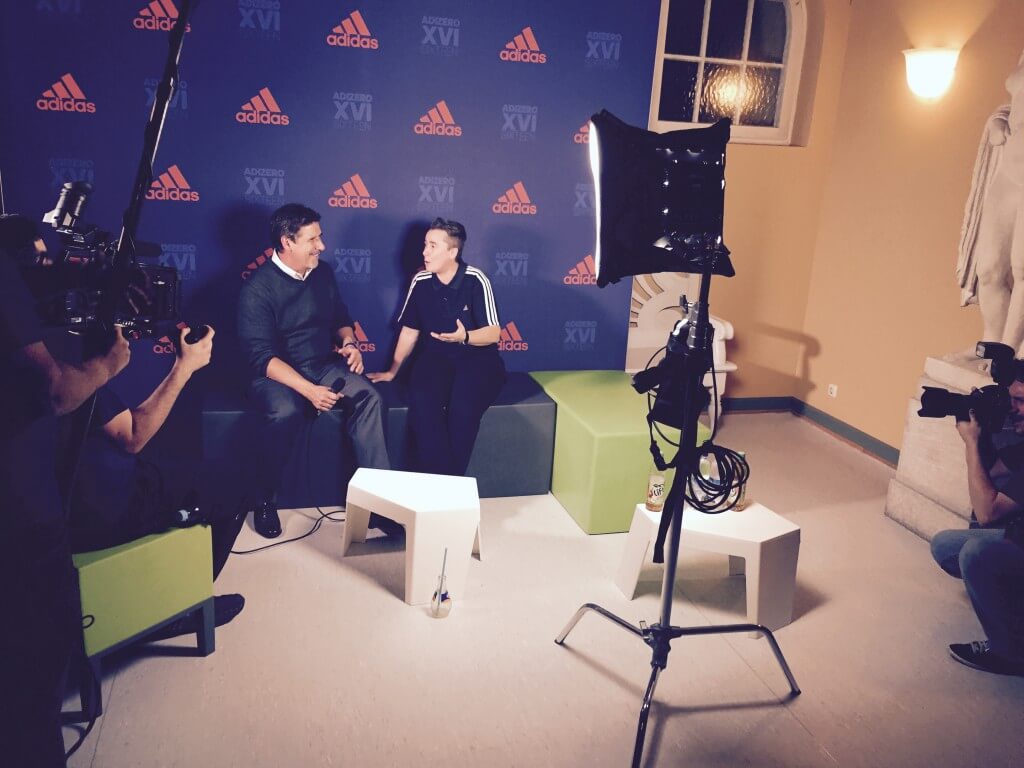
Adidas officially put their swim hat back in the Olympic rings with the launch of their new technical line of competitive swimwear products called ADIZERO XVI on Wednesday, November 18, 2015 in Munich, Germany.
Adidas fell out of the market after 2009 when FINA banned existing technical suits and redefined the boundaries that swimwear manufactures could produce competitive swimwear.
Adidas was the first to introduce the full body suit with rubberized material, compression and zipper technology. Ian Thorpe introduced the suit to the world in 1997 and wore it at the 2000 Olympics in Sydney, Australia where he won 3 gold and 2 silver medals.
By late 2007, the rest of the world caught up as compression technology and new materials permeated the marketplace resulting in new world records in 30 out of 32 Olympic events over the next two years.
The culture and history of the sport was changing so rapidly during that time that the entire aquatic community became polarized over whether the suits or the swimmers were setting records. After much debate, protests, and media attention, FINA banned certain elements of the technical suits in 2009, effectively ending the “Shinny Suit Era” of swimming. Adidas left the market at that time.
Now with new FINA definitions that better define the boundaries of suit construction and permeability, Adidas has jumped back into the market in a big way.
Adidas invited Swimming World Magazine to its headquarters in Herzogenaurach, outside of Nuremburg, Germany to witness the launch of their new ADIZERO XVI line and to understand the planning and marketing strategy behind their efforts.
The 250-acre Adidas headquarters is called the World of Sport and is more like a campus with multiple buildings than a corporate center. It is a sports’ paradise where employees come and go at their own will. However most work from 9am to 6pm.
At the center of campus is a cafeteria that serves chef-made meals that feed 3,500 employees.
Small cafés are embedded in other buildings to service the mostly young workforce. True to the German culture, a kindergarten is housed in one of the buildings to support young families.
No photos were allowed in the consumer and retail building called the Brand Center, where soon-to-be-released products were on private display. In an exclusive showroom, the next generation of colors and products were showcased around athlete images and powerful marketing tools.
Within the Brand Center is the Adidas Walk-of-Fame which houses memorabilia and products of the past including; soccer shoes, balls, jerseys, downhill skiing outfits, and even a pair of the famous Bob Beamon’s long jump shoes from the Mexico City, 1968 Olympics.
The Laces Building, named after its unique inside architecture that resembles shoelaces holding up the floors, houses research and development. Inside this building products are conceived and prototypes are constructed on site. Athletes are measured and fitted, and in some cases customized products are constructed while the athletes wait. Products are tested, adapted and re-engineered by a crew of engineers, designers and tailors based on real-time feedback.
All the testing is done inside the Athlete Services area. The ADIZERO XVI competitive swim line was perfected in this area of the campus.
One room conducted the repellency test where water was sprayed over the fabric in order to measure how quickly water ran off and the material dried.
Another room measured how well the fabric kept its shape after use in order to determine the durability of the product.
Still, another room measured the permeability of the fabric so it met FINA standards.
Watch Video Of The Testing:
Once the fabric met all of the requirements to become FINA approved, the fabric was made into a racing product.
Athletes are treated to a special area within the Laces building where they can be tested, measured and fitted. The laser measurement system gives precise data to the tailors. Josh Davis was with our crew and volunteered to be scanned.
Now with new technology and better-defined boundaries by FINA, Adidas is poised to make a big impact within the aquatic community with the launch of the ADIZERO XVI competitive swim line.




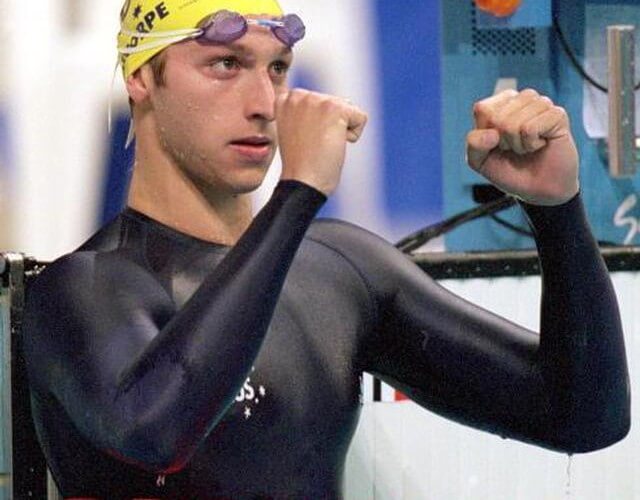



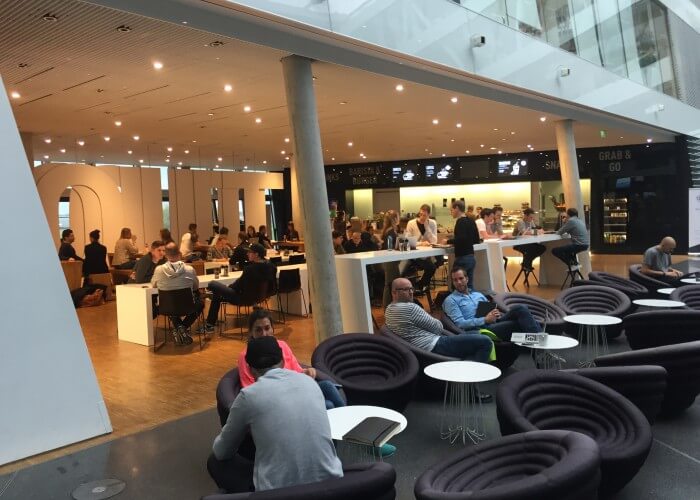
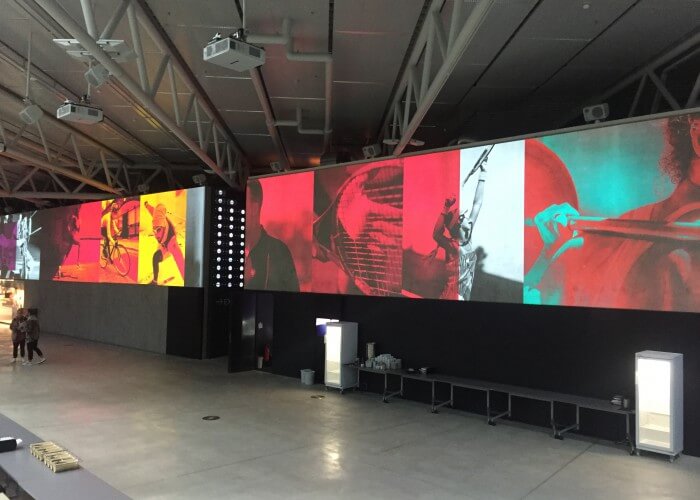
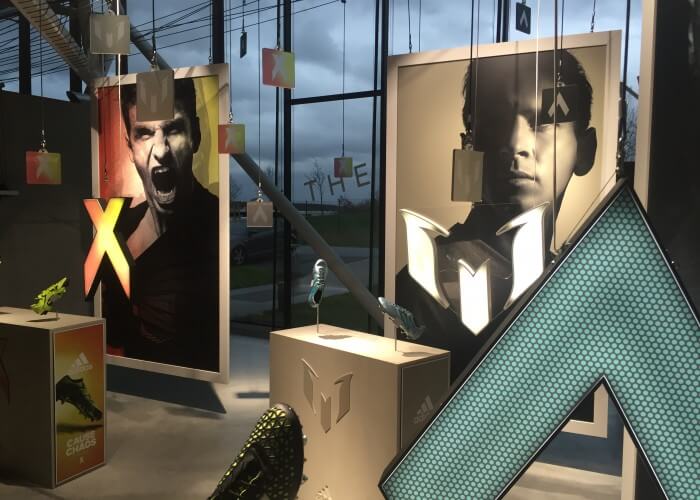
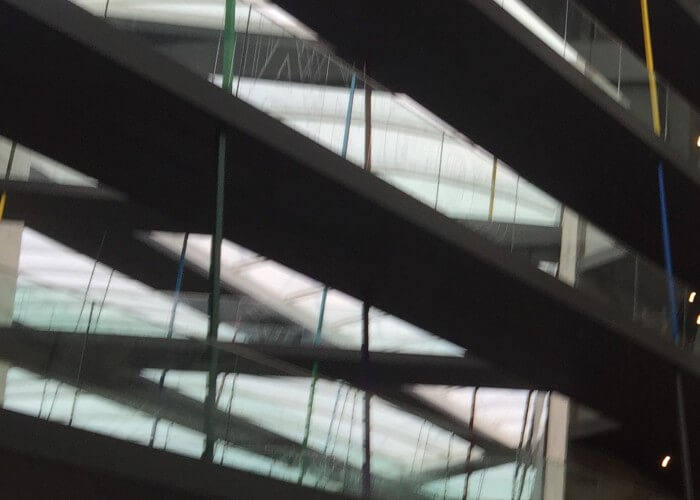
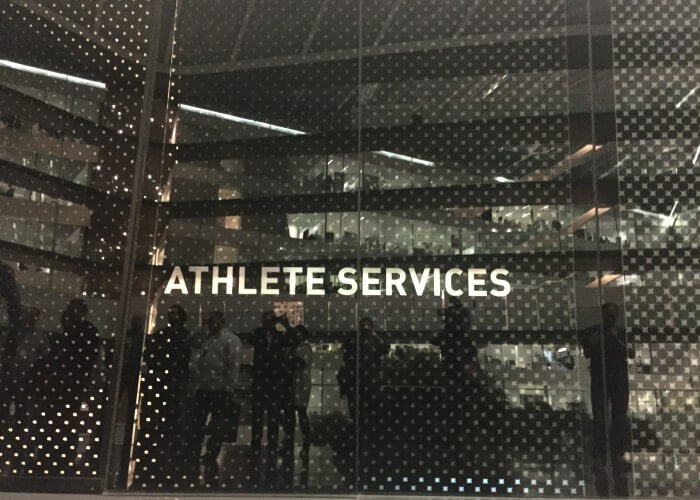
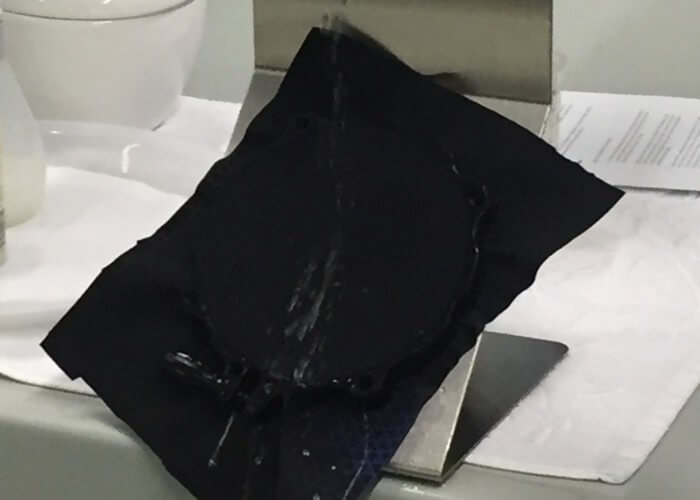
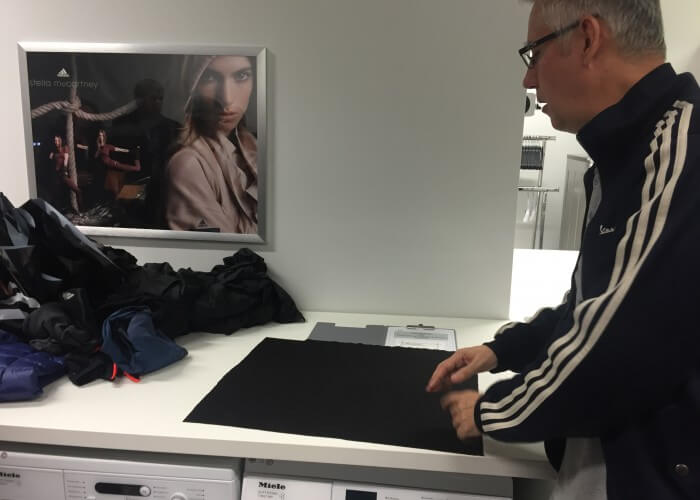
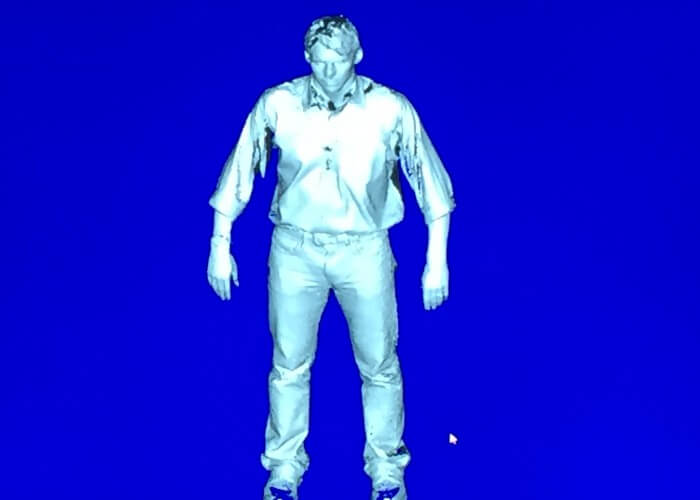
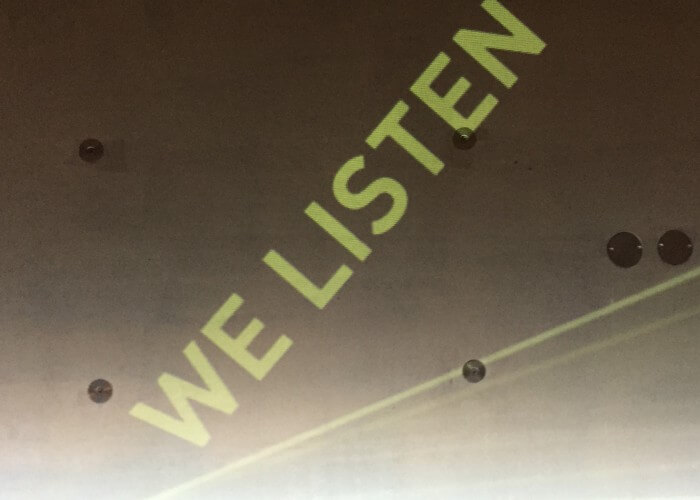
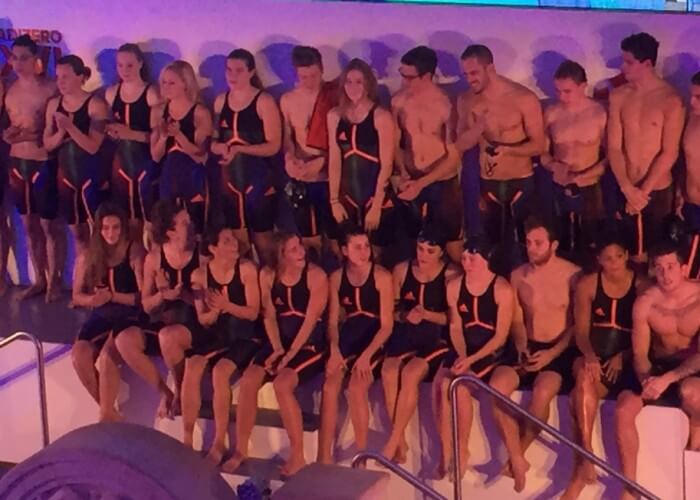
Does the swimmer need to be a laser measured for the suit to be effective
No laser measure necessary. Adidas has a size chart and “how to” measure that needs to be followed strictly. We are getting those posted and into hands of coaches and dealers as quickly as possible for the January launch.
Very cool!!
Is this suit is as efficient as the other top brands like arena CARBON FLEX and Speedo LZR ELITE jammers
Does this follow the same sizing guide as the Carbon line?